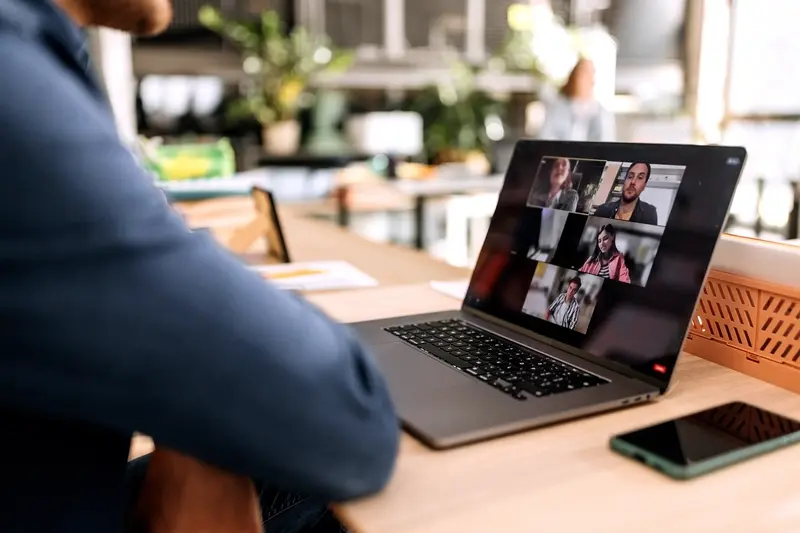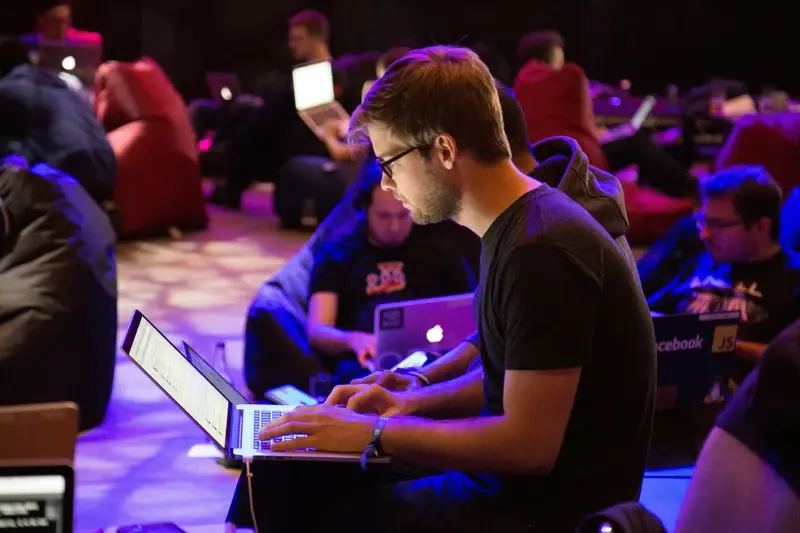Do I Need a Separate Team to Build Wearable Apps?
You've got a brilliant idea for a smartwatch app. Your mobile development team has delivered fantastic smartphone apps before, so naturally you assume they can handle wearable development too. But then reality hits—the constraints are completely different, the user interface principles don't translate, and suddenly your experienced developers are scratching their heads over battery optimisation and tiny screen real estate.
This scenario plays out more often than you might think. Many businesses assume that mobile app development skills automatically transfer to wearable platforms, but the truth is far more nuanced. Smartwatch app development requires a unique blend of technical expertise and design thinking that differs significantly from traditional mobile development.
The biggest mistake companies make is treating wearable apps like miniature smartphone apps—they're entirely different beasts with their own rules and limitations
Whether you need a separate team depends on several factors: your current team's skill set, the complexity of your wearable app, available resources, and timeline constraints. Some teams can adapt and learn wearable-specific technologies; others benefit from bringing in specialists who understand the intricacies of watchOS or Wear OS development from day one.
This guide will help you evaluate your team requirements honestly and make an informed decision about your smartwatch app development approach. We'll explore what makes wearable development unique, assess whether your existing team can handle the transition, and examine various staffing models that successful companies use. By the end, you'll have a clear roadmap for building your wearable app with confidence.
Understanding Wearable App Development
Wearable app development is quite different from building traditional mobile apps—and I mean really different. We're not just shrinking down a phone app to fit on a tiny screen; we're creating something that works on a completely different type of device with its own unique challenges.
The biggest thing to understand is that wearables have serious limitations. Battery life is precious, screens are small, and processing power is limited compared to smartphones. Your Apple Watch isn't going to run a complex game or handle heavy data processing like your iPhone can. Most wearable apps need to be simple, focused, and efficient.
Key Differences from Mobile Development
Building for wearables means thinking about user interaction in a totally new way. People aren't going to spend ages tapping around on a watch screen—they want quick, glanceable information. Think fitness tracking, message notifications, or weather updates rather than full-featured applications.
- Limited screen real estate requiring simplified interfaces
- Battery constraints that demand efficient coding practices
- Different input methods like voice commands and gestures
- Platform-specific development tools and frameworks
- Companion app integration with smartphones
Technical Considerations
The development process itself uses different tools and programming languages. WatchOS apps require Swift or Objective-C, whilst Wear OS apps need Java or Kotlin. You'll also need to understand how wearables communicate with their companion smartphone apps—most wearable apps can't function independently.
Data synchronisation becomes crucial here. Your wearable app needs to seamlessly share information with the phone app without draining the battery or causing delays. This requires careful planning of what data gets stored where and when synchronisation happens.
Current Team Skills Assessment
Before you start thinking about hiring new people or bringing in specialists, take a proper look at what your team can already do. Most mobile development teams have more transferable skills than they realise—and some of these apply directly to smartwatch app development.
Your existing developers likely know the fundamentals of mobile architecture, API integration, and user interface design. These skills form the foundation of wearable development too. The question isn't whether they can learn wearable development; it's how much additional training they'll need and whether you have the time for that learning curve.
Skills That Transfer Well
Some abilities translate beautifully from mobile to wearable development. Your team probably already handles data synchronisation between apps and servers, which is exactly what smartwatches need. They understand how to work with limited screen space—though wearables take this to another level entirely.
- API development and integration experience
- Mobile UI/UX design principles
- Cross-platform development knowledge
- Database management and data sync
- Performance optimisation techniques
- App store submission processes
The Reality Check
Here's where it gets interesting. While your team might have solid mobile skills, wearable apps require a different mindset. Battery life becomes critical; user interactions need to happen in seconds rather than minutes. The team requirements for smartwatch app development include understanding these constraints from day one.
Your developers will need time to understand platform-specific APIs, learn new design patterns, and get comfortable with the unique testing requirements that wearables demand. This isn't impossible—it just takes time and patience.
Create a skills matrix for your team, listing current abilities alongside wearable-specific requirements. This visual comparison will show you exactly where the gaps are and help you plan your next steps.
Specialised Knowledge Requirements
Building wearable apps isn't quite the same as creating standard mobile applications—and I learnt this the hard way when we first started taking on smartwatch projects. The technical requirements are different enough that your existing team might need some serious upskilling.
Let's start with the obvious stuff. Each wearable platform has its own development kit and programming languages. Apple Watch uses WatchKit with Swift or Objective-C, whilst Android Wear (now Wear OS) relies on Android SDK with Java or Kotlin. Your iOS developers might pick up WatchKit fairly quickly, but if they've never worked with the constraints of a tiny screen before, there's still a learning curve.
Hardware Limitations Change Everything
Wearables have limited processing power, tiny batteries, and minimal storage space. This means your developers need to think differently about performance optimisation. What works fine on a phone might completely drain a smartwatch battery in hours. Memory management becomes critical—you can't just throw resources at problems like you might with mobile apps.
Design Thinking Gets Flipped
The user interface design principles are completely different too. We're talking about screens that are sometimes smaller than a postage stamp. Your designers need to understand glanceable interfaces, how people interact with their wrists versus their phones, and how to make everything readable without squinting.
Connectivity is another beast altogether. Wearables often depend on paired smartphones for internet access, which creates unique synchronisation challenges. Your team needs to understand how to handle offline states gracefully and manage data transfer between devices efficiently.
Resource Allocation Considerations
When you're looking at smartwatch app development, the biggest question isn't just about skills—it's about money and time. Building wearable apps requires different resources than your typical mobile app project, and getting this wrong can blow your budget faster than you'd expect.
Let me be straight with you: wearable development takes longer than most people anticipate. Your existing mobile team might have brilliant coding skills, but they'll need time to learn the constraints of tiny screens and limited processing power. That learning curve means your project timeline stretches, and stretched timelines mean higher costs.
Budget Impact on Team Requirements
The real cost isn't just hiring new people—it's the productivity dip whilst your current team gets up to speed. Your developers will spend weeks understanding how battery optimisation works differently on wearables, how user interactions change completely, and why their usual design patterns simply don't work on a 1.4-inch display.
The most expensive mistake we see is companies assuming their mobile app budget will cover wearable development at the same pace and cost structure
Time Investment Reality
Training your existing team takes roughly 3-4 weeks of dedicated learning time before they're productive on wearable projects. Compare this to hiring specialists who can start contributing immediately, and the maths becomes interesting. Sometimes the "expensive" option of bringing in wearable experts actually saves money because you're not paying for an extended learning period whilst your project sits in development limbo.
Understanding what you need to develop an app helps you budget appropriately for the unique requirements of wearable platforms. The sweet spot often lies in hybrid approaches—keeping your core team engaged whilst bringing in targeted expertise for the trickiest bits of wearable development.
Hybrid Approach Options
Sometimes the answer isn't black and white—you don't have to choose between keeping everything in-house or outsourcing completely. There are several middle-ground approaches that can work brilliantly for wearable app development, and honestly, these hybrid options often make the most sense for many businesses.
The most popular hybrid approach involves keeping your core mobile team intact whilst bringing in wearable specialists for specific tasks. Your existing developers can handle the mobile app side of things (which they already know well), and the specialists focus purely on the wearable components. This works particularly well because most wearable apps need a companion mobile app anyway.
Partnership Models That Work
Another option is the consultant-plus-team model. You bring in an experienced wearable developer as a consultant who works alongside your existing team, sharing knowledge and guiding the technical decisions. This approach means your team learns valuable skills for future projects whilst getting the expertise you need right now.
Some companies opt for what I call the "training wheels" approach—they outsource their first wearable project completely but insist on close collaboration and knowledge transfer. Their internal team shadows the external developers, learning the ropes for next time.
Common Hybrid Arrangements
- External wearable development with internal mobile app development
- Specialist consultant working with your existing team
- Outsourced first project with knowledge transfer included
- Part-time specialist contractor supporting full-time team
- Design agency partnership for wearable-specific user experience
The beauty of hybrid approaches is flexibility. You get the expertise you need without completely restructuring your team, and you can adjust the arrangement based on how the project progresses and what you learn along the way.
Making the Right Decision
After weighing up all the factors—your current team's abilities, budget constraints, and project timeline—you're probably wondering what the best path forward actually is. The truth is, there isn't a one-size-fits-all answer when it comes to team requirements for wearable development.
If your existing mobile team has solid experience with native iOS and Android development, you might not need a completely separate team at all. Many smartwatch app projects can be handled by experienced mobile developers who are willing to learn the wearable-specific APIs and design principles. The learning curve isn't insurmountable—it's more about understanding the unique constraints and opportunities that wearables present.
When You Should Consider External Help
There are certain situations where bringing in specialists makes perfect sense. If your project involves complex health monitoring, advanced sensor integration, or cutting-edge features like gesture recognition, you'll want people who've done this before. The same applies if you're working with tight deadlines or don't have the bandwidth to upskill your current team.
Start with a small pilot project to test your team's capability before committing to a full wearable development programme.
Smart Decision Framework
Here's a practical way to make your decision:
- High complexity + tight timeline = hire specialists
- Simple app + learning budget = train existing team
- Medium complexity + flexible timeline = hybrid approach
- Mission-critical project = bring in experienced consultants
Remember, this decision isn't permanent. You can always start with one approach and pivot if circumstances change. Learning from successful app developers can help inform your strategy and prevent common pitfalls.
Conclusion
Building wearable apps doesn't have to be this massive, overwhelming decision that keeps you second-guessing yourself for months. After working with countless teams over the years, I can tell you that most of the anxiety around this question comes from not having a clear picture of what you're actually dealing with.
The truth is, there's no one-size-fits-all answer here. Some teams can absolutely handle wearable development with their existing talent—especially if they've got solid mobile experience and aren't afraid of learning new platforms. Others will benefit massively from bringing in specialists, particularly when they're dealing with complex health monitoring features or performance-critical applications.
What matters most is being honest about your current capabilities and realistic about your timeline. If you've got a team that's already stretched thin with your main mobile app, throwing wearable development on top might not end well. But if you've got curious developers who love tackling new challenges, and you're not in a mad rush to market, upskilling your existing team could be brilliant.
The hybrid approach often works best for many companies—keep your core team involved for the strategic bits and user experience decisions, but bring in specialists for the platform-specific technical challenges. This way you're not starting from scratch with people who don't understand your product, but you're also not drowning your team in unfamiliar territory.
Whatever route you choose, make sure it aligns with your budget, timeline, and long-term goals. Wearable apps aren't going anywhere, so you've got time to make the right decision for your specific situation.
Share this
Subscribe To Our Learning Centre
You May Also Like
These Related Guides

How Do You Manage A Remote App Development Team Effectively?

What Are the Best Practices for Managing Remote App Development Teams?



